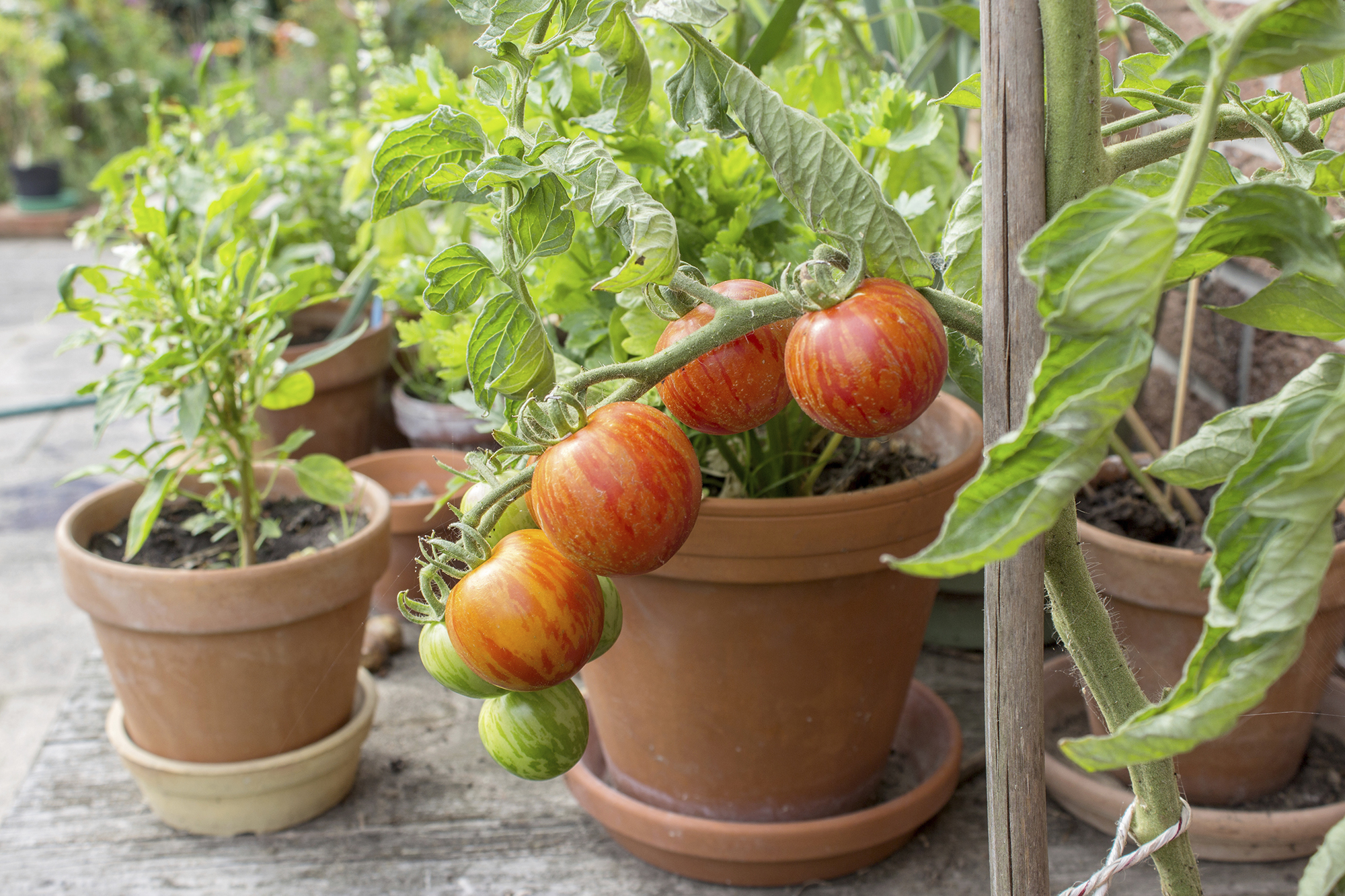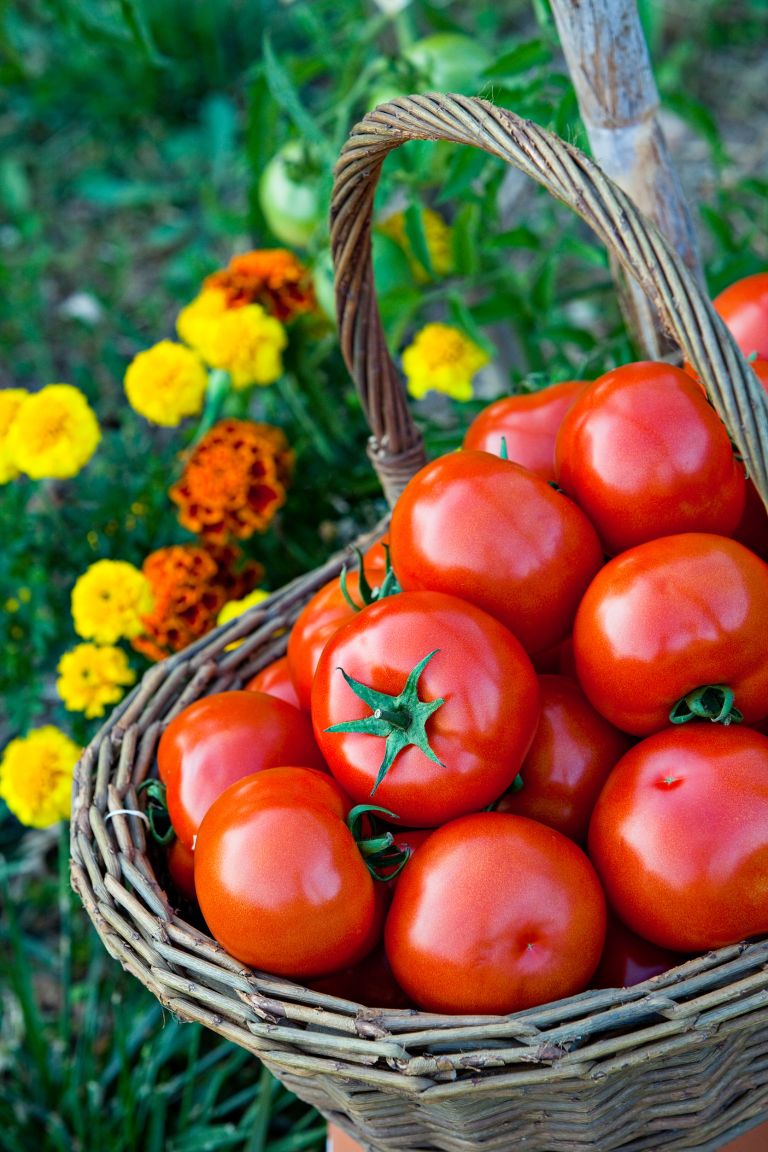How much water do tomato plants need? Expert tips to avoid wilting and splitting
If you are wondering how much water tomato plants need, we have the answers so that you can grow plentiful, flavorful produce in your garden


Wondering how much water tomato plants need? It's a question any budding fruit and vegetable gardener invested in getting a healthy crop of tomatoes will ask – but the answer is far from definitive.
Garden experts advise that the level of water you need depends on your plant's size and growing conditions, which isn't overly helpful – but when armed with our expert tomato growing advice, you can find the water level that works for you. The result? Beautiful tomatoes that will add color to your garden and flavor to your dinner table.
How much water do tomato plants need?

So how much water do tomato plants need? While it is hard to find an exact formula, these expert-approved answers is a failsafe place to start. Get tomato watering levels right, and this could explain why your tomato leaves are turning yellow, and why your tomatoes are splitting, too.
How much water do tomato plants need per day?
Margaret McCoy, an R&D Agronomist and Ph.D. for True Organic, explains that there is no 'one size fits all answer' – so you should check your plants and soil daily to see how they respond.
'I water our tomatoes one to two times a day with the hose, but you may need to spend a few extra minutes on hot and sunny days to bring your plants back from the stress state they may go into,' Margaret says.
Margaret suggests watering your tomatoes and your tomato companion planting based on how much moisture you have in your soil. You can assess this by looking at your leaves or if your plant appears 'droopy'. If your soil is still moist at the end of the day, then it may be best to wait until the morning before watering.
However, younger plants may demand more water. 'They are not as established in the root, and they don't have the ability to source what they need when in a stressful environment,' Margaret explains. 'As they mature, this becomes less of a dramatic issue, and more of a slight issue (in terms of the plant's visual state).'
Can tomato plants be overwatered?

Yes, you can easily overwater your tomato plants. When this happens, the soil becomes waterlogged, making it harder for air to reach the roots (which is essential for growth).
'These plants need water and air just like humans. If you have too much water, think of how that affects you. It's not a pleasant way to be,' Margaret says.
The expert warns that overwatering is most common when plants are still small as they have less soil around them (in a plug tray situation). So, if you're experimenting with container garden ideas, it is important to watch your watering levels.
What are the signs of overwatering tomato plants?
The signs of overwatering tomato plants are yellow, blistered or wilting leaves. Stems may turn yellow, too. To check if you are overwater, put your finger into the soil to assess how wet it is. If it feels boggy, especially after a dry day, your tomato plants are most definitely overwatered.
What is the best way to water tomato plants?

'The best way to attend to plants, whether is it watering or fertilizing, is to do it in smaller doses, often,' Margaret says. She also recommends the following:
1. Water in the morning
It is one thing to know when to plant tomatoes, but knowing when to water them is equally important to their growth.
'Taking the time to water tomato plants in the morning and at night, not in the heat of the day, will allow your plants to go through their natural cycle throughout the day without any added stress,' the expert says.
2. Focus the water on your roots
Margaret explains that watering your tomato plants means focusing on your roots, not the plant visible above ground.
'Intend your water applications towards the roots. This will save you from causing unnecessary humidity inside the plant canopy, which may lead to a microclimate that is conducive to other diseases or pests that may harm your plant,' she says.
Similarly, if you water your leaves in the midday heat, the sun may cause burn on your leaves from the magnifying properties of water.
Sign up to the Homes & Gardens newsletter
Design expertise in your inbox – from inspiring decorating ideas and beautiful celebrity homes to practical gardening advice and shopping round-ups.

Megan is the Head of Celebrity Style News at Homes & Gardens, where she leads the celebrity/ news team. She has a history in interior design, travel, and news journalism, having lived and worked in New York, Paris, and, currently, London. Megan has bylines in Livingetc, The Telegraph, and IRK Magazine, and has interviewed the likes of Drew Barrymore, Ayesha Curry, Michelle Keegan, and Tan France, among others. She lives in a London apartment with her antique typewriter and an eclectic espresso cup collection, and dreams of a Kelly Wearstler-designed home.
-
 Extend the lifespan of your appliance with 5 simple but crucial washing machine maintenance tips
Extend the lifespan of your appliance with 5 simple but crucial washing machine maintenance tipsFrom cleaning the filters to keeping the door open, experts reveal the washer tips they swear by
By Andy van Terheyden Published
-
 These are the 6 must-have colors to decorate with in April 2025
These are the 6 must-have colors to decorate with in April 2025What do retro-inspired yellows and beautiful blues all have in common? They're on our hot list for the season ahead
By Sophia Pouget de St Victor Published